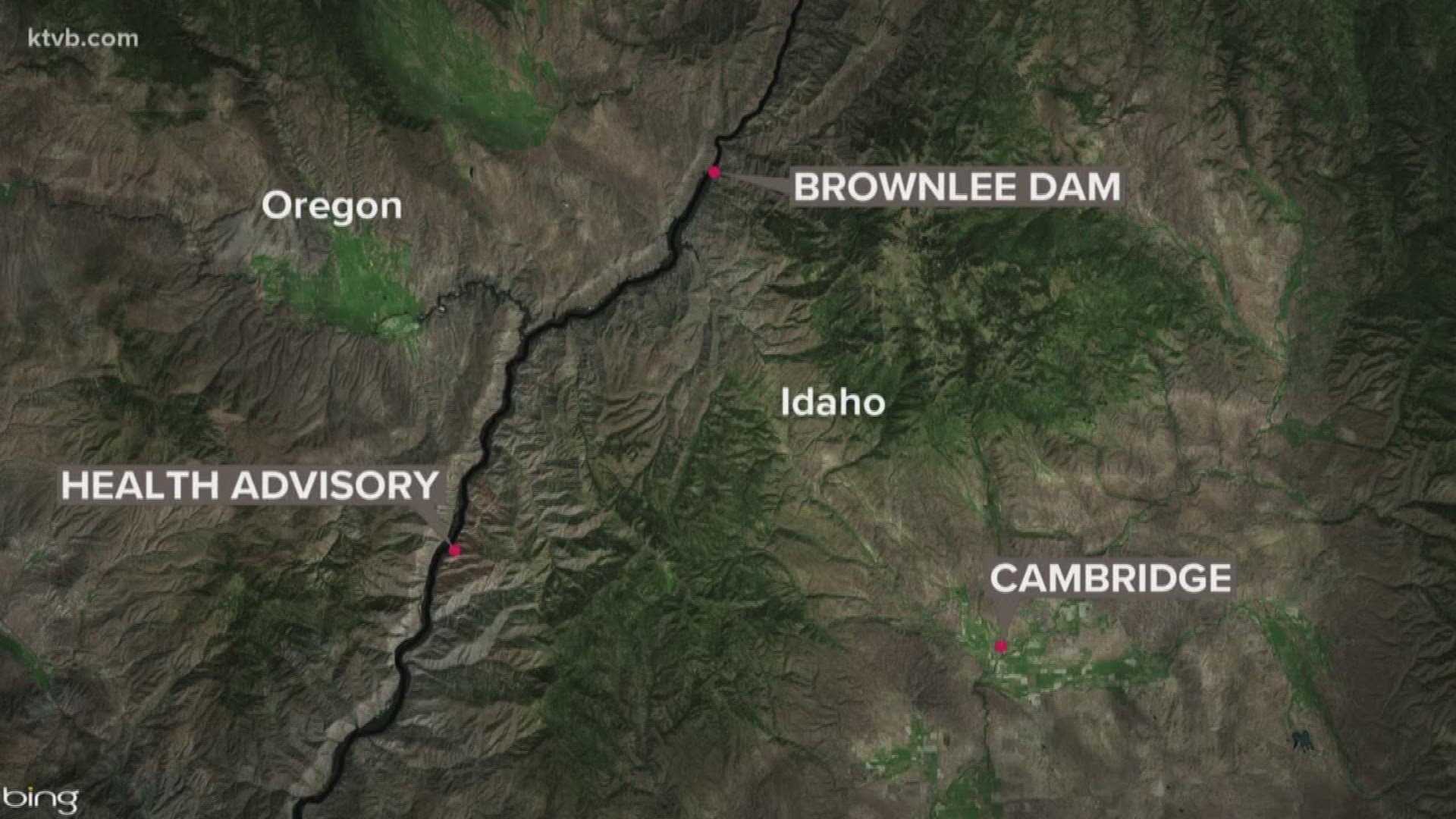CAMBRIDGE, Idaho — Recreationists are being urged to use caution when spending time near the water at Brownlee Reservoir after high concentrations of cyanobacteria were found during recent testing.
The Southwest District Health Department, along with Idaho Power and the Idaho Department of Environmental Quality, issued a health advisory on Tuesday for the area of the reservoir near Mountain Man Resort including from Wolf Creek on the Idaho side to Canyon Creek on the Oregon side.
Brownlee Reservoir is a popular recreation spot on the Snake River between western Idaho and eastern Oregon.
Recent samples taken from the reservoir indicate high concentrations of toxin-producing cyanobacteria, officials said.
Cyanobacteria can be harmful to people, pets, and livestock, and those with liver or kidney damage are at an increased risk of illness.
While cyanobacteria are a natural part of most Idaho bodies of water, their populations rise during higher temperatures and can bloom, releasing toxic chemical compounds - called cyanotoxins - into the water. According to the health department, blooms can vary in appearance, and may look like mats, foam, spilled paint, or surface scum, and have a foul odor.
Anyone recreating near or in Brownlee Reservoir is urged to take the following precautions:
- Avoid swimming, wading, or other activities. Take extra precautions to ensure children, pets, and livestock are not exposed to the water.
- Do not drink or cook with water containing a bloom. Boiling and filtering the water can increase the risk.
- Wash your hands thoroughly after handling fish caught in water experiencing a bloom. Cyanotoxins can accumulate in fish and the risk to people is being researched. Any fish caught should be cleaned and washed thoroughly in uncontaminated water and any internal organs disposed of before consumption. If people choose to eat fish from this area, filet the fish and remove all of the fat, skin, and organs before cooking.
- Clean with potable water as soon as possible if water contacts skin or pet fur.
Symptoms of cyanotoxin exposure include rashes, hives, diarrhea, vomiting, coughing, and/or wheezing. More severe symptoms affecting the liver and nervous system may result from ingesting water.
If you, a child or a pet is exposed, wash with soap and water, watch for symptoms and consult your healthcare provider or your pet's veterinarian if symptoms persist.
For more information about harmful algal blooms and recreation water quality advisories, visit DEQ's website.

